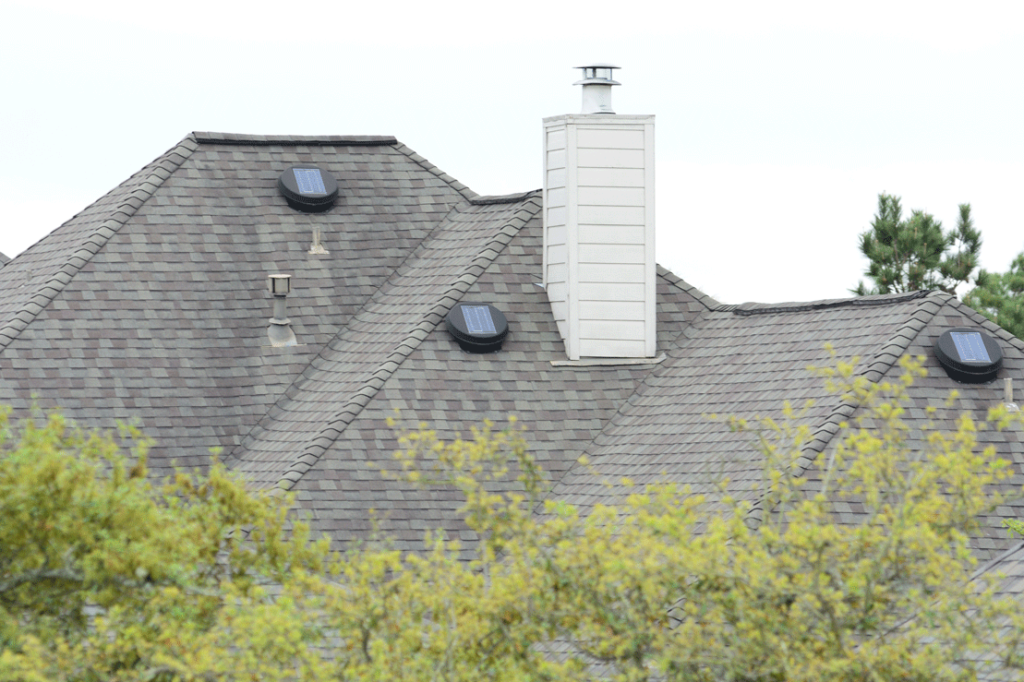The Difference Between Active, Passive and Mechanical Roof Ventilators
Attic spaces need to be properly vented to avoid several undesirable outcomes. If you haven’t had the chance to read our previous article on attic ventilation, take a few moments to familiarize yourself with the concept. The roofing industry is currently filled with several different products regarding attic ventilation but how does each product work, what are their pros and cons and ultimately, what is the best long-term investment for your roof?
Topics of Discussion
Passive ventilation
How does passive ventilation work?
The first category of available ventilators and probably the most common in north America is passive vents. What is a passive ventilation?
Passive venting, also know as natural ventilation, consists in letting naturally rising air move through an attic space and escape through passive vents without the use of mechanical ventilation systems or roof ventilators creating suction effects (active ventilation vents).
Key Features of Passive Ventilation
Passive ventilation systems are usually composed of soffit vents dedicated to the entry of fresh air into the attic and passive vents, located on the highest point of the roof, dedicated to letting the naturally rising hot and humid air to escape outside. A passive ventilation system may also rely on wind driven ventilation (winds coming in cross-sectional directions to the soffits) to enter from the soffits and create a positive pressure in the attic, pushing the heat and moisture upwards to be evacuated.
To better understand how to apply passive ventilation products, we must first understand building code requirements on attic ventilation. Building codes across North America refer to attic ventilation in terms of net free area (NFA) of ventilation to apply to a given roof in regards to the size of its insulated ceiling surface area. The bigger your home, the more openings (NFA) you’ll need to properly ventilate your roof. Introducing a passive ventilation system to a roof implies that you, or the builder, are fulfilling building code requirements in terms of NFA for both intake and evacuation purposes with products that do not offer any additional venting value. We will see what these extra venting values are later in this article.
A passive vent offers a specified amount of net opening for natural ventilation to allow heat and moisture to escape the attic. They can be installed on the roof and on walls as well. Here are examples of passive ventilators:
Ridge Vents
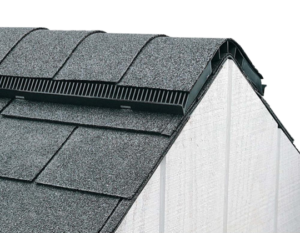
Shingle or Turtle Vents
Shingle vents are single type units designed to be positioned uniformly at top portion of the roof to act as natural ventilation escape points. They work well for open attics but are not recommended for all type of attics such as cathedral attics with closed trusses. A cross ventilation roof structure would have to be added to the roof to allow the fresh air to move in all directions in the attic to later be drawn out through each individual shingle vent. (a cross ventilation roof structure is composed of wood pieces installed perpendicularly to the roof rafters raising the roof and allowing air to flow through each roof channel in all directions).
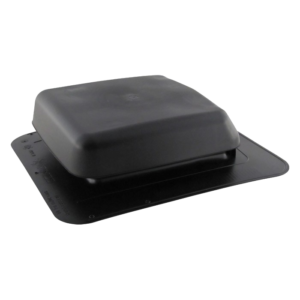
Gooseneck Vents
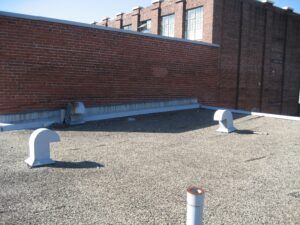
Gable Vents
A gable ventilation system is composed of wall louvers and rely entirely on wind driven ventilation to bring fresh air in and push heat and humidity out of the attic space. Gable vents can also be combined with other passive ventilation units to evacuate warm air from the attic space.

Mechanical Ventilation
The second category of vents are mechanical ventilators. These systems are composed of air vents with moving parts that require electricity to function. They can be composed of solar powered vents or direct power source ventilators. These ventilation systems work in the same manner as passive or active type ventilators except that the roof ventilation is done through power vents pulling moist air out the attic space at a given volume (CFM). Fresh air comes in from the intake vents or soffits and is drawn out by the power vents, cooling off the attic space. The ventilators can be set to run on a timer, temperature sensor and simply on constant evacuation 24h/7.
As previously mentioned, building codes across the USA and Canada tend to recommend a 1/300 venting ratio for sloped roofs and 1/150 venting ratio for flat roofs (please refer to your local building codes). But how do you determine the right amount of mechanical ventilators necessary to offer proper roof ventilation according to NFA requirements? In Canada, the CSA A93:19 norm offers an easy conversion from mechanical volume flow rate to NFA rating. The conversion is as follows:
1CFM = 0.34in NFA
This allows us to convert a given volume (CFM) into an NFA rating for mechanical ventilators and hence apply the same basic calculation to obtain the required NFA. Thus, the right amount of solar powered vents or direct connection exhaust vents may be determined. These exhaust vents may be installed on roofs as well as walls and offer a variety of fans and control options.
Active Ventilation
- The tower or ‘’Maxi’’ vent: uses the Bernoulli principle to create a pressure differential between the ventilator and the attic space. This pressure differential combined with buoyancy ventilation, otherwise known as the chimney effect, allows this ventilator to exhaust air from inside the attic space at a variable CFM given local average wind speeds. Higher wind speeds flowing through the vent will result in a higher exhaust flow rate (CFM) from the attic.
- The turbine vent: uses wind to make its turbine turn and hence exhausts air from the attic in this matter.
Active vents currently fall under the passive type category according to current Canadian building regulation. Hence, the calculation to determine the number of vents installed on a roof is done in the same manner as the passive ventilators. On the other hand, some manufacturers will offer a different, less restrictive, way to calculate the number of ventilators to install on a roof knowing that active ventilation vents are more efficient than building code requirements. Please note that these recommendations do not follow current building code requirements.
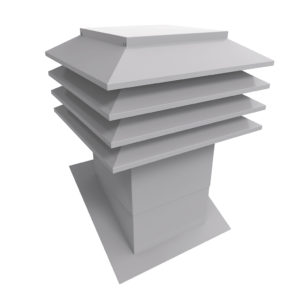
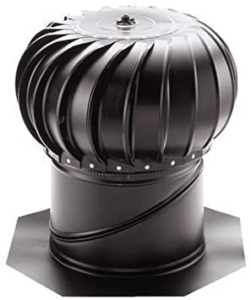
Pros and Cons: Active vs Passive vs Mechanical
Now that we’ve gone through the foundations of each category, how do these different roof ventilators compare to one another? It is important to specify that for the purpose of this exercise we will consider a northern climate (4 seasons) with snow precipitations.
Pros and Cons Passive Ventilation
Additionally, it is important to keep in mind that these types of ventilators require directional winds to function properly. If your local winds are not able to push enough fresh air into the soffits, air movement in the attic will be slow and non-uniform, possibly creating dead zone pockets resulting in condensation issues. Also, plastic manufactured passive vents have been known to have issues with rodent intrusions.
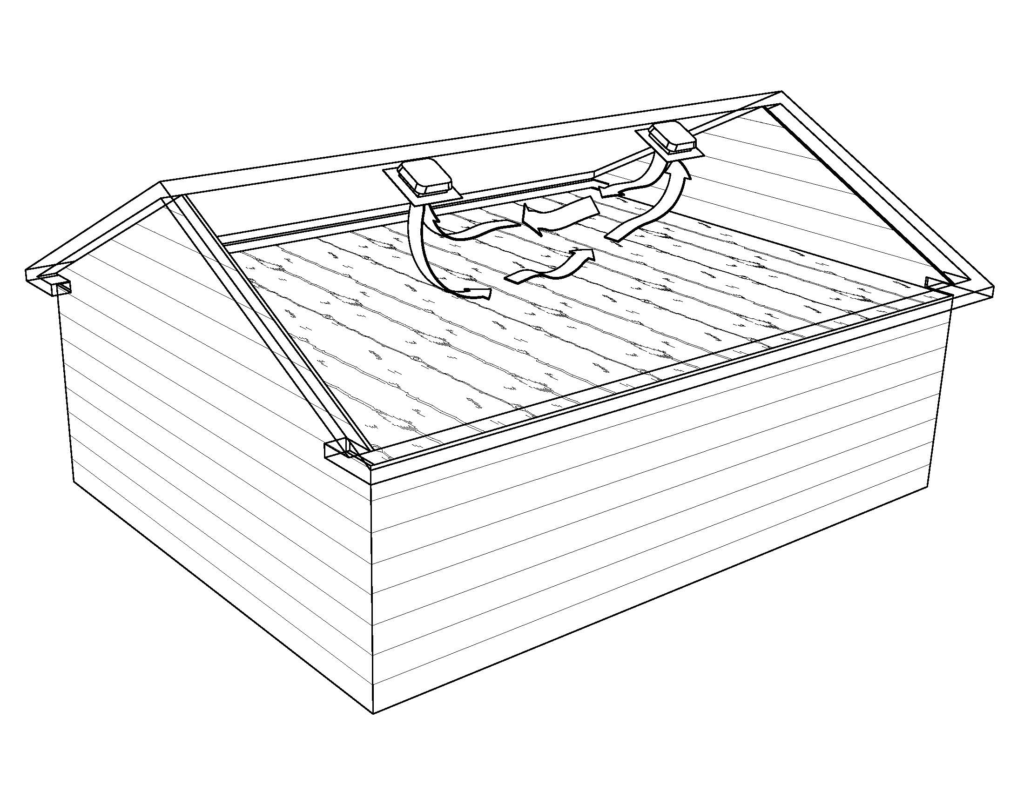
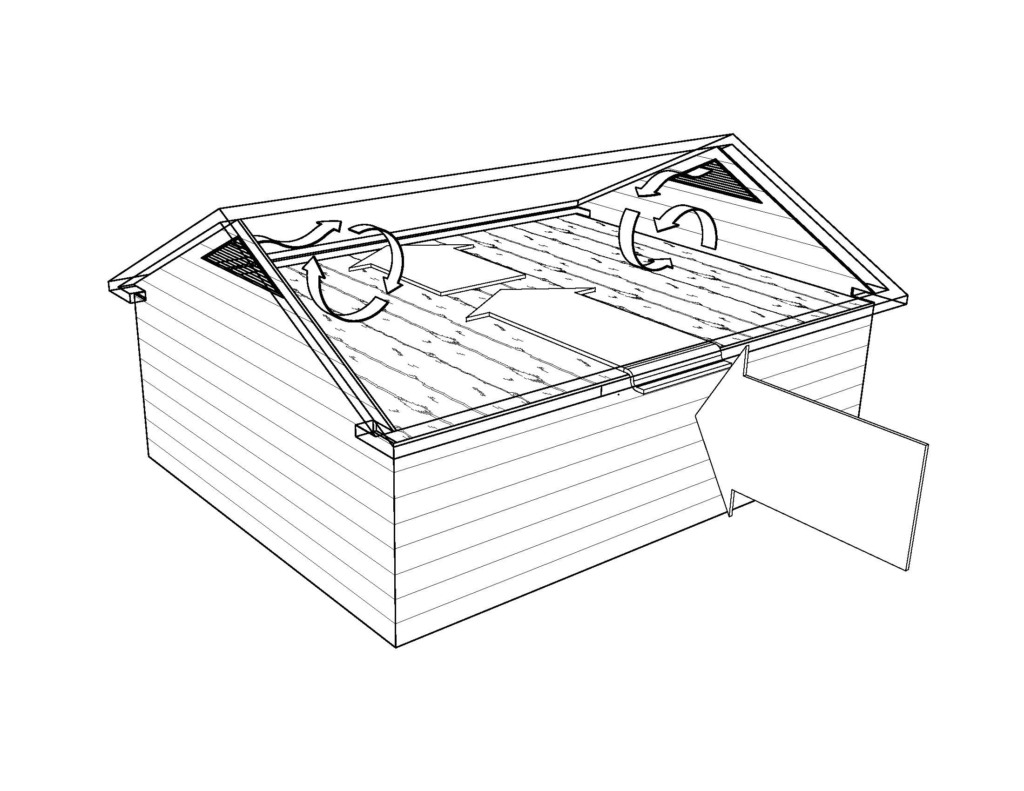
Pros and Cons Mechanical Ventilation
Mechanical ventilators on the other hand are known to be less aesthetically pleasing than passive vents but offer higher efficiency ratings as they steadily draw out a given amount of volume (CFM) from the attic. Having a continuous rate of evacuation allows the attic to stay cool and dry during winter while also offering possible energy bill savings during the summer. The downside to these ventilators is that they are mechanical and moving parts are always bound to fail. Unfortunately, having the fan installed on the roof often means a homeowner won’t realize possible malfunctions until it is too late, as it only takes a few hours for condensation to build-up in an attic space.
An important point to consider when installing these ventilators is to make sure your home has sufficient open air intake to compensate for the volume being evacuated. Not having the right amount of fresh air intake will lead to the creation of a negative pressure in the attic, consequently drawing hot and humid air from inside the home into the attic which may lead to condensation issues. Also, a disadvantage about solar-powered fans is that they do not work at night. The nocturnal period is the most important in attic ventilation as it allows the roof to cool down within a few degrees of the exterior temperature. Lastly, the high efficiency of these ventilators may allow possible energy bills savings during summertime but on the other hand will also cost you energy to operate on a 24h/7 basis.
Pros and Cons Active Ventilation
The turbine ventilator, on the other hand, relies on its moving turbine to draw air from the attic and may freeze during freezing rain or heavy snowfall winter outbreaks. Once blocked, its overall efficiency is greatly reduced and the unit also loses its means to eliminate weather infiltrations, as the spinning turbine drains water out from the vent. Additionally, these units can sometimes be noisy as the spinning turbine can give out a squeaking sound.
Active ventilators also offer possible energy bill savings during the summertime as they can cool down the attic efficiently. Keep in mind that these units do not need any electricity to operate whereas the mechanical ventilators do, resulting in additional energy savings. In general, active vents are usually built from galvanized steel or aluminum, making them very reliable against rodents.
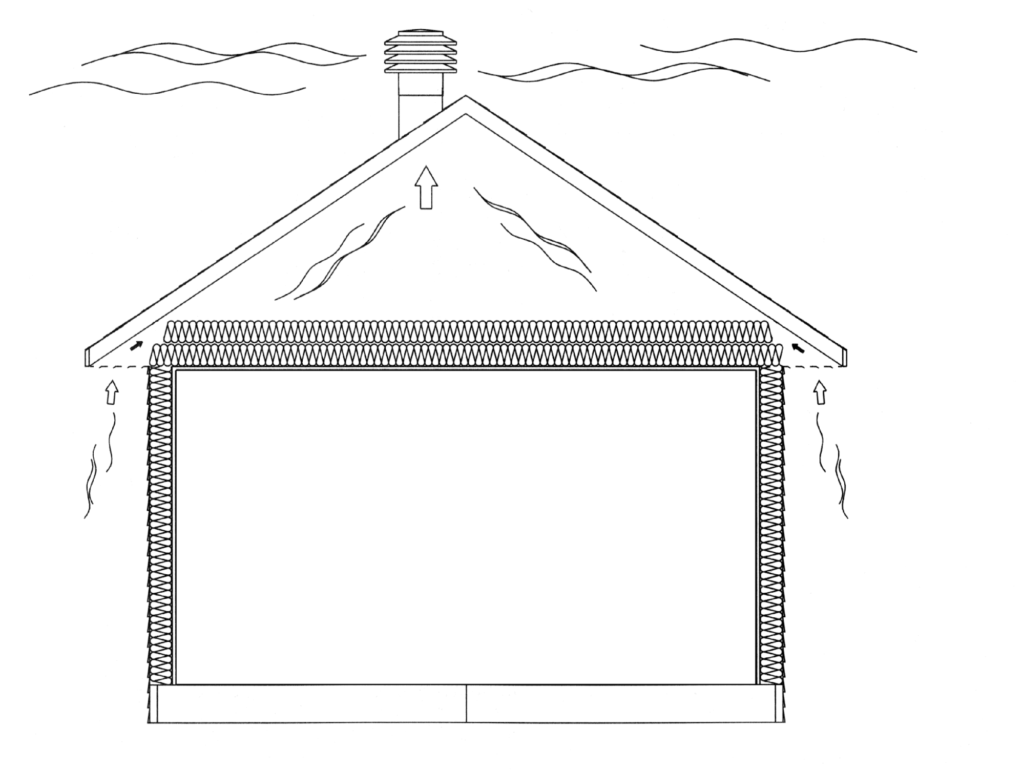
What is the best long-term investment for your roof?
I think it is important to say that all types of vents have been proven to properly ventilate an attic space under given conditions. If your home is in a warm climate where cold weather and snow are not variables to consider, I’d say any type of vent will work cooling the attic given the right concept and installation. Mechanical and active vents will have an advantage over passive vents as they offer efficient venting and possible energy bill savings.
On an opposite note, if your home is in a northern climate where cold weather and snow are major factors to consider, the ‘’Maxi” (or Maximum) ventilator would be the best choice. It is built from galvanized steel, stands high above the ridge line, offers year-round venting, offers continuous and variable exhaust flow rate according to local wind speeds to cool down the attic and lastly, will also save you money on energy bills during warm seasons.
For more information on our selecting a ventilator right for your home or building visit our products page.
Technical and development Director at Ventilation Maximum


